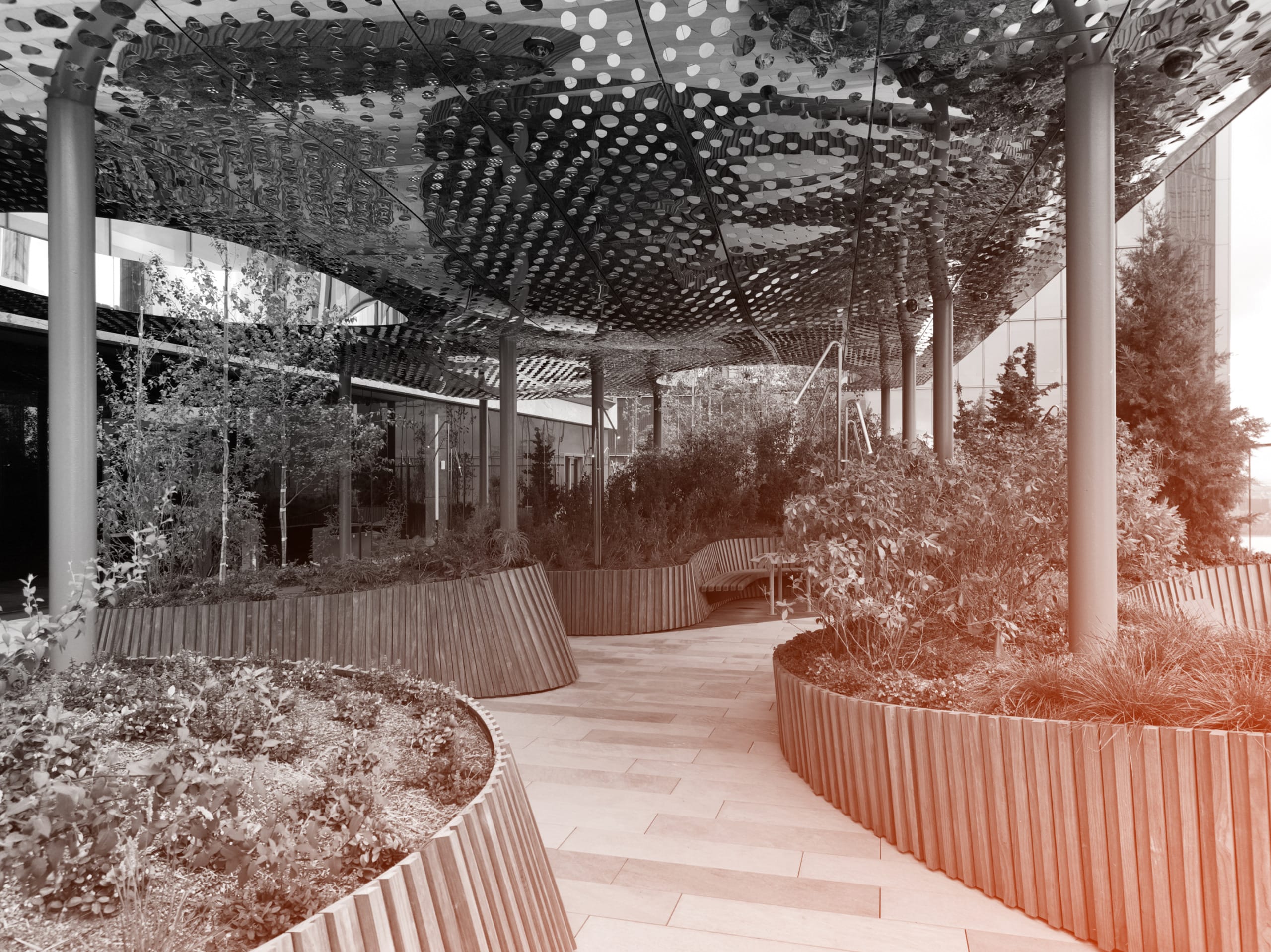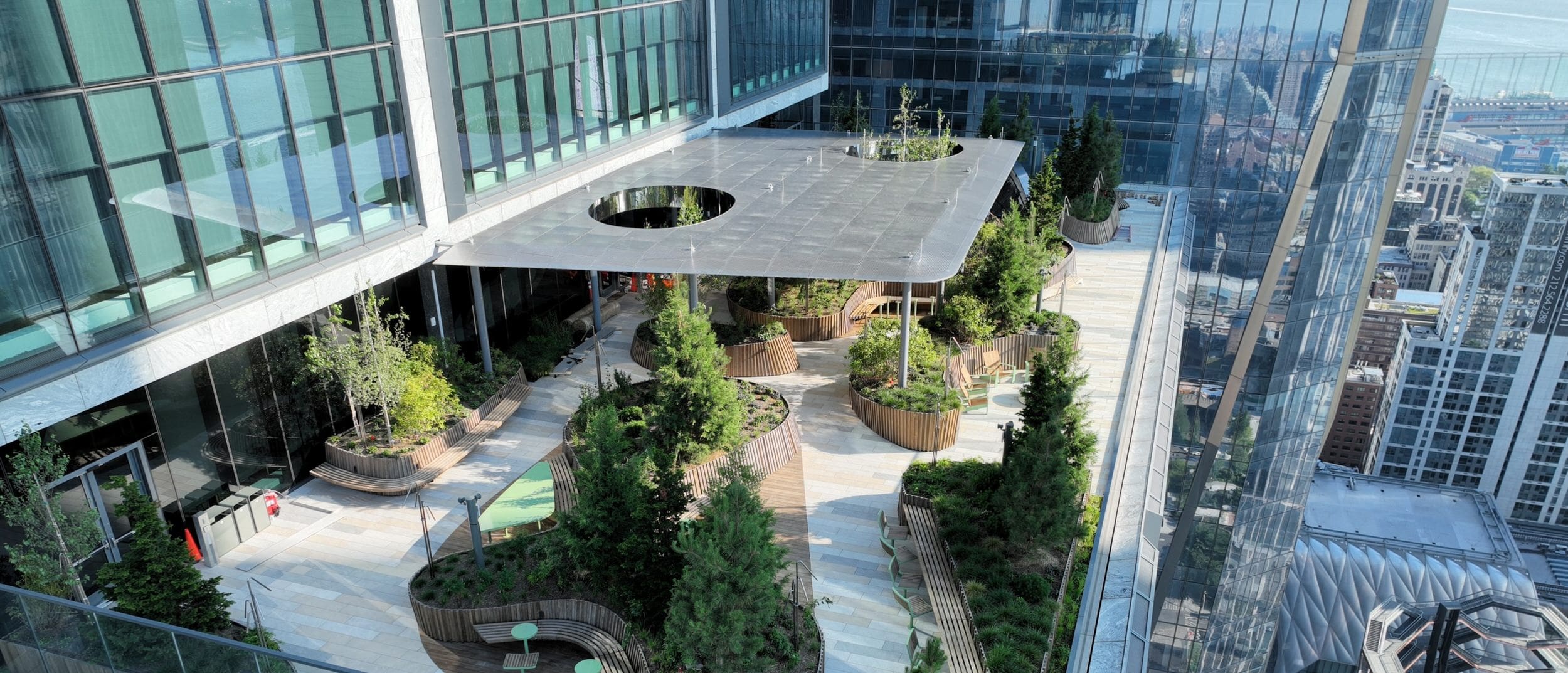Guide to the Aging Process of Various Metals
Aging Process of Various Metals
Many of the basic construction metals physically transform over time. As natural environmental conditions interact with the metal its surface changes in texture and color. Initially, a basic oxide layer is formed. It doesn’t take too long for the the oxide layer to convert to a hydroxide. Soon after, the hydroxide layer begins to combine with other elements in the atmosphere. In the end, the surface of the metal has a stable mineral composition that is very resistant to further alteration. This aging process is apparent in natural aluminum, copper and the copper alloys, lead, steel and zinc.
Zahner engineers have created a range of surfaces which enhance the weathering process to bring the metal surface to a texture and color desired by clients. For interior applications, these patinated surfaces can be locked-in by using inhibitors that will essentially freeze the texture and color at a particular state of patina.
Exterior applications are more complex, because the combined heat, moisture and pollution cause the metal surfaces to continue to change. Certain measures can be taken to delay this transition, and certain patinated surfaces are more resilient than others.
DE YOUNG MUSEUM, FROM RAW COPPER, TO WEATHERED COPPER.
Above is the patination of the metal surface apparent on the de Young Museum, a project that Zahner completed in 2005. The architects originally desired a light golden-hued appearance for the museum, but this intent evolved as the conversation evolved, and the design team desired the museum to blend and emerge from it’s forested surroundings like an ancient indigenous structure.
Zahner helped guide this decision. A champion of the integrity, resilience, and evolution of copper, we asked the clients for a little faith in the material, explaining that over time it would transition from it’s bright golden red, to a dark brown, to a black, and finally, it will slowly emerge into earthy greens.
Other exterior installed metals, such as zinc and steel patinas maintain their color over time, darkening subtly or lightening in some cases based on the weather, pollution, and proximity to water.
The results are far from a static painted appearance; Zahner finishes tend to reflect the natural beauty of the metal and its surrounding elements. Paint yellows, cracks, peels, and scratches quite easily. Natural metal surfaces age in a more sophisticated ways, growing and deepening in intensity.
Stainless Steel Versus Aluminum
These two metals are somewhat similar in appearance, but they could not be further apart in the way that they perform over time. Stainless steel is a stunning material for its ability to maintain its appearance over decades, while aluminum performs well structurally, but as a finished surface, it is less than desirable.
Aluminum has a tendency scratch easily, and it whitens over time. The surface of aluminum will become murky as the rain and sun beat down on it. Therefore Zahner rarely uses this material as a finished surface, instead using the material for its structural properties.
Fingerprints on Metal
Like glass, reflective metal surfaces are prone to fingerprinting. Like glass, these surfaces can be cleaned. The oils from people’s hands can become impregnated in the surfaces of the metal, but with the right cleaner, many of these surfaces can be cleaned.
Typically, if a surfaces is going to be in a highly trafficked area, we recommend a preweathered surface such as pre-weathered zinc, which is a series of matte surfaces that are less prone to showing fingerprints.
In some cases, that finger prints on metal is actually desirable. For instance, with certain copper materials in heavily trafficked areas will actually brighten the finish as people hands prevent the copper from oxidizing. On metals such as the Dirty Penny patina on copper, the result of oils on the surface increases the iridescent qualities inherent in the metal surface.
To learn more about metal surfaces, properties, and phenomena, sign up for the Zahner newsletter. For questions related to metal, or to get started with Zahner on a project you’re developing, please contact our sales team.
References
- Zahner, L. Architectural Metal Surfaces. New York: John Wiley, 2004.
- Zahner, L. Architectural Metals: A Guide to the Selection, Specification and Performance. New York: John Wiley, 1995.




 Photo ©
Photo © 


 PHOTO ©️ Parrish Ruiz de Velasco (parrch.com)
PHOTO ©️ Parrish Ruiz de Velasco (parrch.com)



 © Fedora Hat Photography
© Fedora Hat Photography





 Ɱ, Creative Commons Attribution-Share Alike 4.0 International license, edited.
Ɱ, Creative Commons Attribution-Share Alike 4.0 International license, edited.